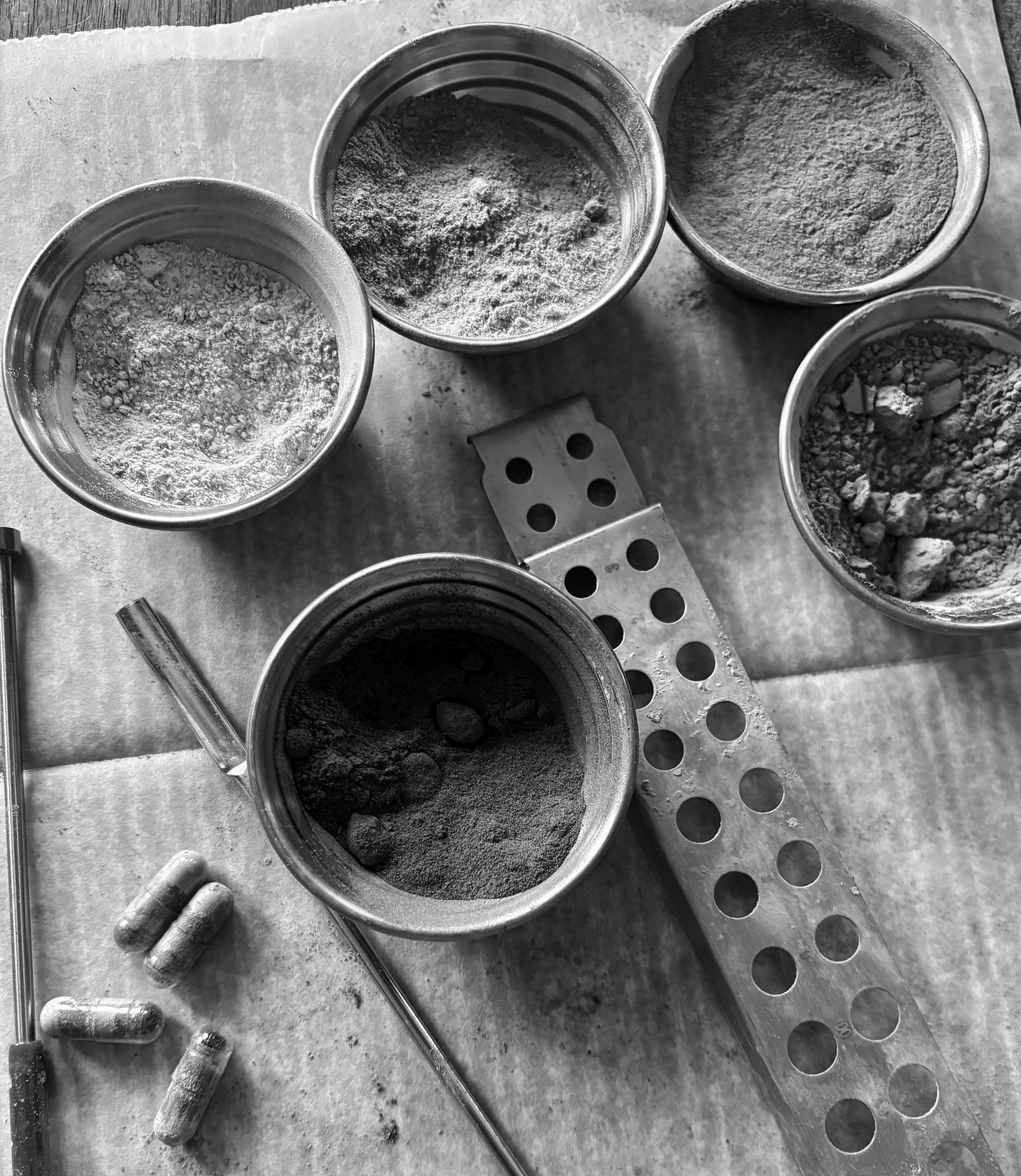It is possible to make custom supplements or capsules. A friend asked if there was a way to get someone who does not drink tea, or anything else healthy, a dose of green tea in a capsule. There are green tea capsules, readily available, but making capsules allows for customization. For example, matcha powder could be combined with other antioxidants to boost the immune system or target a health problem.
Why would you want to do this though?
Green tea, for example, contains a substance called EGCG and it is a very healthy catechin that has the potential to positively affect health. https://pmc.ncbi.nlm.nih.gov/articles/PMC4082721/ https://tching.com/2021/05/understanding-the-health-benefits-of-tea-tching/
Matcha powder has significantly more ECGC than a cup of green tea. Matcha powder can go in a capsule, which might be an easier way to get ECGC especially if matcha powder or a cup of green tea doesn’t appeal.
Mushroom powder can go in a capsule. A capsule is a great place for mushroom powder, I sure can’t seem to add it to anything else.
Ginger powder can go in a capsule
Mountain Rose Herbs had an olive leaf powder on clearance, that can go in a capsule. Olive leaf contains oleuropein which is a strong antioxidant, and has antibacterial and cardioprotective properties. It lowers blood pressure and seems to have a positive effect on blood sugar and cholesterol. It can reduce cancer risk and is neuroprotective. There are olive leaves in the backyard but oleuropein is at it’s finest in the fall around the time of the olive harvest. The powder in a capsule is pretty easy, and the oleuropein is bitter, but not in a capsule.
All of these herbs come in powders. Hibiscus, dandelion root and so on. The empty capsules are available and they are pretty inexpensive. In the picture above, there’s a little holder for the capsules and a shovel that is convenient for filling the capsule and a tamper to pack the powders in.
Why would anyone do this?
Just to conveniently add supplemental herbs to a daily routine. It is customizable, instead of relying on what is commercially available. It’s a little nutty maybe but doable.
Anything is possible. :)



Rooibos tea made from a South African plant, so it is not technically a tea. It is a leaf not a root, from the plant. So kind of like Yerba Mate. Frankly tea is fun and healthful to mix different ingredients. Look at the benefits of each possible ingredient and then mix away.
Rooibos tea is known for its various health benefits. It is rich in antioxidants, which can help protect against oxidative stress and support heart health. Studies have shown that drinking rooibos tea may help regulate cholesterol levels, particularly for people at risk of heart disease, by lowering LDL (bad cholesterol) and increasing HDL (good cholesterol) levels.
Additionally, it may help manage blood glucose levels and prevent insulin resistance, potentially aiding in the management of diabetes symptoms and the prevention of type 2 diabetes.
Rooibos tea is also beneficial for skin health due to its alpha hydroxy acid and zinc content, which can reduce the appearance of fine lines and wrinkles and aid in wound healing (hm, maybe a skin ingredient)
Rooibos contains essential minerals like calcium, manganese, and fluoride, which contribute to strong and healthy bones.
Rooibos tea is caffeine-free, making it a suitable choice for those sensitive to caffeine or looking to reduce their caffeine intake.
Oops not finished. Advised that some teas and brands were better than others.
One was dandelion root tea another was red rooibos? Pretty color like hibiscus. Now all these kinds of teas are a bit ( a lot) confusing. So is a mixture of root teas the way to go? And what is red rooibus tea? ( a root like dandelion?)